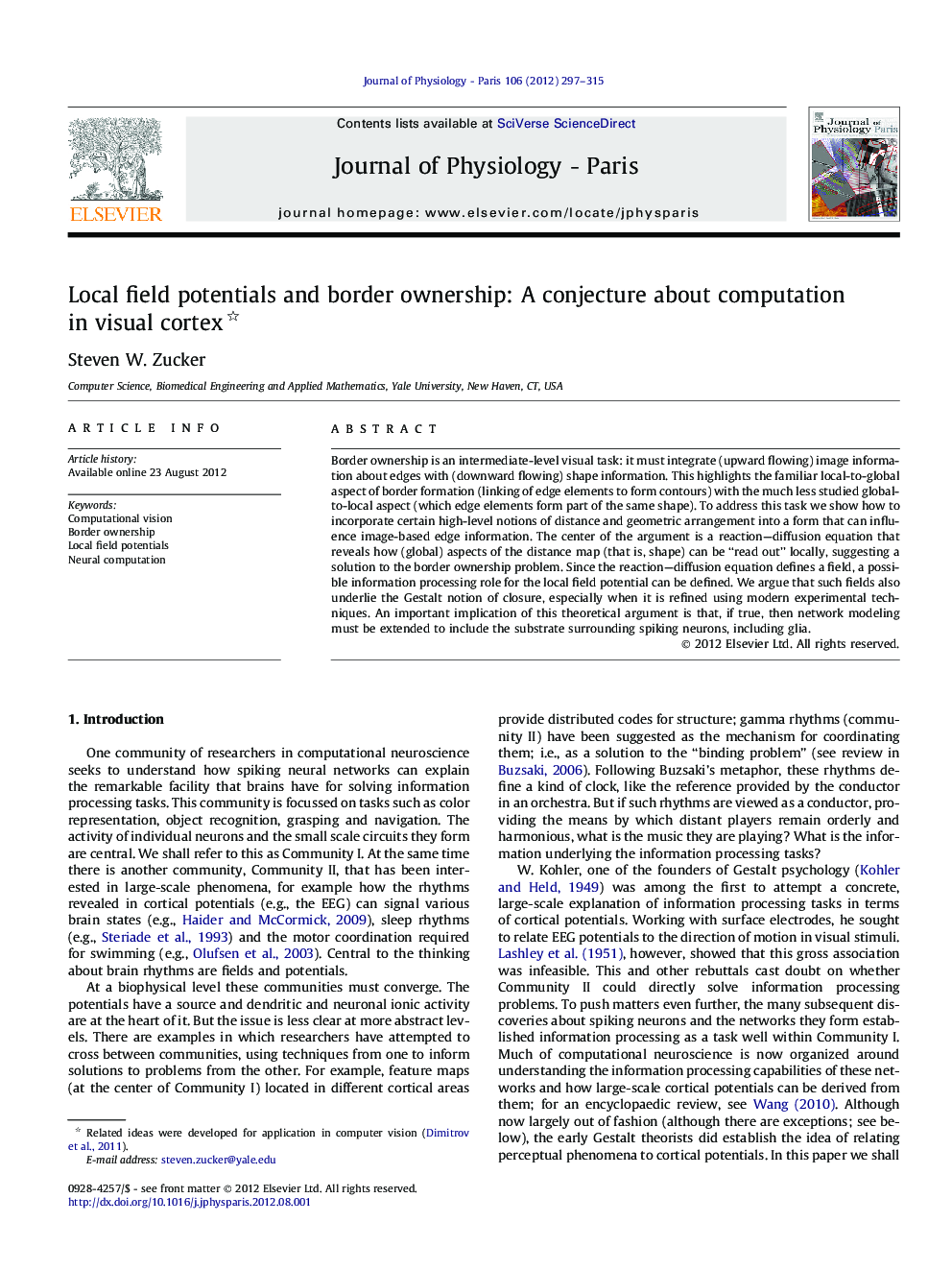| Article ID | Journal | Published Year | Pages | File Type |
|---|---|---|---|---|
| 2842424 | Journal of Physiology-Paris | 2012 | 19 Pages |
Border ownership is an intermediate-level visual task: it must integrate (upward flowing) image information about edges with (downward flowing) shape information. This highlights the familiar local-to-global aspect of border formation (linking of edge elements to form contours) with the much less studied global-to-local aspect (which edge elements form part of the same shape). To address this task we show how to incorporate certain high-level notions of distance and geometric arrangement into a form that can influence image-based edge information. The center of the argument is a reaction—diffusion equation that reveals how (global) aspects of the distance map (that is, shape) can be “read out” locally, suggesting a solution to the border ownership problem. Since the reaction—diffusion equation defines a field, a possible information processing role for the local field potential can be defined. We argue that such fields also underlie the Gestalt notion of closure, especially when it is refined using modern experimental techniques. An important implication of this theoretical argument is that, if true, then network modeling must be extended to include the substrate surrounding spiking neurons, including glia.
► Border ownership is a Gestalt property of figures not backgrounds. ► Neurons in the visual cortex exhibit a border-ownership response. ► We develop a novel computational model of border ownership involving local field potentials. ► Results show how distant boundary influences are represented in the field.
